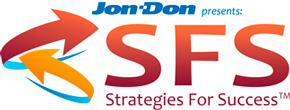 It might seem odd to think that a great business idea or an expert’s advice can have a negative impact on your company. But it happens all the time. Let’s look at how business owners can fall into this trap. I’ll also offer up some questions to ask yourself as you evaluate new ideas for your business.
It might seem odd to think that a great business idea or an expert’s advice can have a negative impact on your company. But it happens all the time. Let’s look at how business owners can fall into this trap. I’ll also offer up some questions to ask yourself as you evaluate new ideas for your business.
Entrepreneurs by nature are people who are hard working, creative, frequently given to moments of brilliance — and also VERY easily distracted! They’re charter members of the “Once and done” club: Once they’ve done something, they confidently move on to the next exciting issue that grabs their attention.
This is a dangerous business trait I refer to as “E-Drift”, my own playful twist on Michael Gerber’s “E-Myth” writings. In my advisory role I see E-Drift as the entrepreneurial tendency to jump from one activity to another, or from one business idea to another. Worse, I’ve seen an abrupt change in business direction seemingly overnight and with little thought to the long term impact these directional shifts will have on the owner’s company. (Steve Toburen in our Strategies for Success seminar often refers to the typical carpet cleaner as an “Attention Deficit Disorder” manager!)
The underlying reasons for these directional shifts are as varied as the owners themselves. Sometimes their business isn’t going well and change is needed for the very survival of their company. Or the owner will see new strategies the company can implement, or opportunities that they can exploit, to significantly improve their bottom line. But far too often this shift takes place simply because the business owner is bored with their situation; or because they’ve surrendered to E-Drift and can’t stay focused on the direction the company is currently headed.
Repeatedly I’ve seen this last “E-Drift scenario” played out when an entrepreneur has attended a convention or seminar where he heard a particularly engaging speaker. (Hopefully not me!) Our E-Drifter gets all worked up into an emotional whirl, returns to his office and in effect announces to his staff, “Hold everything! I just heard this great new idea that we’re going to start using.”
How is this dangerous? Let’s start with the scenario where the new advice the owner follows, or the new direction he wants to take, is simply wrong for the company, but the owner doesn’t know it. Instead of keeping the company focused on a well-thought-out direction, he allows the company to lose momentum by constantly going off in a different direction. It’s like a car that’s swerving all over the road. It’s going to waste an awful lot of energy getting to its destination; that is, if it doesn’t run off the road and crash first!
Of course there’s also the danger of good ideas that fit poorly. These new ideas might be great strategies for other companies, but they just don’t fit the type and size of our company, its current business condition, or its unique culture. Also, there’s the danger of not curbing our E-Drift habit before it feeds on itself and becomes an addiction.
Even though experts who offer advice might be highly qualified and have great suggestions, ask yourself these questions before adopting a new direction in your company: Is the advice a good fit for you considering your emotional and intellectual makeup? Is it consistent with the vision you’ve established for your company? Does it address the unique challenges your company currently faces? And maybe most importantly, does this new direction for your company promote and advance the long range goals and vision that you and your family have for your collective future?
Good questions, aren’t they? But an even bigger danger is when desperation causes us to wildly flail about looking for a quick fix that in fact turns into yet another business quagmire. Let me think on this common problem and I’ll have some thoughts in my next blog post.
Chuck Violand (more about Chuck)
SFS Instructor
CEO Violand Management Associates[/private]
